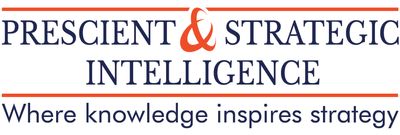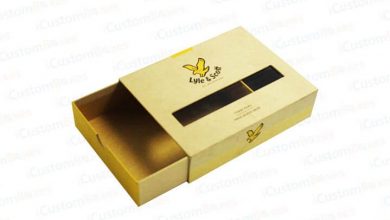Neurostimulation Devices Providing Immediate Relief by Blocking Pain Signals

Neurostimulation Device Market
Neurostimulation Device Market:- The application of these medical devices is also escalating due to the increasing preference for minimally invasive procedures, as they are effective and cause minimal pain. The usage of neurostimulation devices via these treatment procedures provides immediate pain relief to patients. Additionally, the growing consciousness about mental health and increasing awareness regarding the treatments for mental disorders will boost the usage of neurostimulation devices in the coming years. The implantable systems target specific cranial, peripheral, cortical, spinal, and subcortical nerve structures to regulate the neuronal activity, thereby providing therapeutic effects for an array of neuropsychiatric disorders.
Moreover, recent developments in neuroimaging and neurotechnology and enhanced understanding of neurocircuitry will amplify the usage of such devices for treating a wide range of psychiatric and neurological diseases. The surging need for advanced neurostimulation devices has resulted in hefty investments in research and development (R&D) by manufacturers, including ImThera Medical, MED-EL GmbH, Neuronetics Inc., Aleva Neurotherapeutics SA, Cochlear Ltd., St. Jude Medical Inc., Boston Scientific Corporation, Synapse Biomedical Inc., Neurosigma Inc., Medtronic PLC, NDI Medical LLC, LivaNova PLC, and EnteroMedics Inc.
Currently, medical device companies are offering internal and external neurostimulation devices to offer better treatment to patients. Internal devices include sacral nerve stimulation (SNS), vagus nerve stimulation (VNS) devices, gastric electric stimulation (GES), spinal cord stimulation (SCS), and deep brain stimulation (DBS), and cochlear implants (CI). Whereas external devices available in the market include transcutaneous electrical nerve stimulation (TENS) devices and transcranial magnetic stimulation (TMS).
In recent years, the application of non-invasive neurological devices has significantly increased in the treatment of depression, attention-deficit/hyperactivity disorder (ADHD), autism spectrum disorder, and other similar disorders among children and adolescents, globally. Whereas, invasive devices like VNS and DBS have proven efficient in treating epilepsy and dystonia among young patients. With the constant developments in the invasive remodulation technology, the application of internal devices and implants will amplify in the coming years. This would also help in expanding the current knowledge base of neurocircuitry in the future.
Growth Drivers
Globally, the prevalence of chronic pain is increasing, which is a major reason for the growth of the neurostimulation device market. These devices are helpful in the management of the pain caused due to various injuries and chronic diseases, by blocking the pain signals before they reach the brain. Besides, the increasing geriatric population is also raising the demand for these devices, as the elderly are more susceptible to chronic pain and neurological disorders, such as Alzheimer’s disease, epilepsy, and Parkinson’s disease, as compared to people in the younger age groups.
Other than the factors mentioned above, the increasing research and development (R&D) investments by manufactures for the development of technologically advanced products are also fueling the growth of the neurostimulation device market.
Further, the widespread prevalence of neurological disorders and other diseases, which require these devices for management, is also adding to the demand in the neurostimulation device market, as most of these diseases have pain as a symptom. Also, the growing demand for minimally invasive treatments by patients is also expected to drive the market progress, as many now are opting for treatments that cause minimal pain and are effective; neurostimulation devices provide immediate relief from pain to patients. All these factors are expected to drive the growth in the market for neurostimulation devices in the forecast period.
According to P&S Intelligence, the North American neurostimulation device market holds the top position globally. This is due to the surging cases of chronic pain, neurological disorders, and other chronic ailments in the region. Neurological diseases like Parkinson’s disease, migraine, traumatic brain injury (TBI), spinal cord injury (SCI), stroke, epilepsy, tension-type headache (TTH), and Alzheimer’s disease and other dementias affect a large chunk of the U.S. population. TTH, migraine, stroke, Alzheimer’s disease and other dementias, and SCI are the most prevalent diseases, affecting around 121.6 million, 68.5 million, 7.8 million, 2.9 million, and 2.2 million individuals, respectively, in the U.S.
Thus, the rising prevalence of neurological disorders and increasing investments in R&D will amplify the usage of internal and external neurostimulation devices in the foreseeable future.
Table Of Content
Chapter 1. Research Scope & Methodology
1.1 Market Definition
1.2 Market Scope
1.2.1 Global neurostimulation device market, by type
1.2.2 Global neurostimulation device market, by application
1.2.3 Global neurostimulation device market, by geography
1.3 Research Methodology and Sources
Chapter 2. Executive Summary
2.1 Key Findings
2.2 Research Summary
Chapter 3. Market Outlook
3.1 Introduction
3.1.1 Components of neurostimulation device
3.1.1.1 Generator
3.1.1.2 Leads
3.1.1.3 Programmer
3.2 Factors Driving Growth of the Market and its Impact on Market Forecast
3.2.1 Increasing prevalence of chronic pain
3.2.2 Increase in geriatric population
3.2.3 Increase in incidents of neurological disorders
3.2.4 Growing awareness about mental diseases and their treatment
3.2.5 Increasing R&D investments in novel and innovative neurostimulation devices
3.2.6 Growing demand of minimally invasive treatment
3.2.7 Impact analysis of drivers on market forecast
3.3 Factors Hindering Growth of the Market and its Impact on Market Forecast
3.3.1 Alternative treatment options
3.3.2 Side effects of neurostimulation devices
3.3.3 High Cost of neurostimulation devices
3.3.4 Impact analysis of restraints on market forecast
Chapter 4. Global Neurostimulation Device Market Size and Forecast
4.1 Global Neurostimulation Device Market, by Type
4.2 Global Neurostimulation Device Market, by Application
4.3 Global Neurostimulation Device Market, by Region
Chapter 5. Global Neurostimulation Device Market, by Type
5.1 Implantable/Internal Neurostimulation Device Market
5.1.1 Implantable/internal neurostimulation device market, by type
5.1.1.1 Spinal cord stimulation (SCS) device market
5.1.1.2 Deep brain stimulation (DBS) device market
5.1.1.3 Sacral nerve stimulation (SNS) device market
5.1.1.4 Vagus nerve stimulation (VNS) device market
5.1.1.5 Cochlear implants (CI) device market
5.1.1.6 Gastric electric stimulation (GES) device market
5.1.2 Implantable/Internal Neurostimulation Device Market, by region
5.2 External Neurostimulation Device Market
5.2.1 Global external neurostimulation device market, by type
5.2.1.1 Transcutaneous electrical nerve stimulation (TENS) market
5.2.1.2 Transcranial magnetic stimulation (TMS) device market
5.2.2 Global external neurostimulation device market, by region
Chapter 6. Global Neurostimulation Device Market, by Application
6.1 Pain Management Neurostimulation Device
6.2 Parkinson’s Disease Neurostimulation Device
6.3 Urinary and Fecal Incontinence Neurostimulation Device
6.4 Epilepsy Neurostimulation Device
6.5 Hearing Loss Neurostimulation Device
6.6 Gastroparesis Neurostimulation Device
6.7 Depression Neurostimulation Device
Chapter 7. Global Neurostimulation Device Market, by Geography
7.1 North America Neurostimulation Device
7.1.1 North America neurostimulation device, by type
7.1.1.1 North America implantable/internal neurostimulation device, by type
7.1.1.2 North America external neurostimulation device, by type
7.1.2 North America neurostimulation device, by application
7.1.3 North America neurostimulation device, by country
7.2 Europe Neurostimulation Device
7.2.1 Europe neurostimulation device, by type
7.2.1.1 Europe implantable/internal neurostimulation device, by type
7.2.1.2 Europe external neurostimulation device, by type
7.2.2 Europe neurostimulation device, by application
7.2.3 Europe neurostimulation device, by country
7.3 Asia Neurostimulation Device
7.3.1 Asia neurostimulation device, by type
7.3.1.1 Asia implantable/internal neurostimulation device, by type
7.3.1.2 Asia external neurostimulation device, by type
7.3.2 Asia neurostimulation device, by application
7.3.3 Asia neurostimulation device, by country
7.4 Rest of the World (RoW) Neurostimulation Device
7.4.1 RoW neurostimulation device, by type
7.4.1.1 RoW implantable/internal neurostimulation device, by type
7.4.1.2 RoW external neurostimulation device, by type
7.4.2 RoW neurostimulation device market, by application
7.4.3 Row neurostimulation device , by country
Chapter 8. Competitive Positioning and Market Share Analysis
8.1 Porter’s Five Forces of Competitive Position Analysis
8.1.1 Bargaining power of buyers
8.1.2 Bargaining power of suppliers
8.1.3 Threat of new entrants
8.1.4 Intensity of rivalry
8.1.5 Threat of substitutes
8.2 Global Neurostimulation Device Market Share Analysis
Chapter 9. Company Profiles and Strategic Developments
9.1 Key Company Profiles
9.1.1 Aleva Neurotherapeutics SA
9.1.1.1 Business overview
9.1.1.2 Product and service offerings
9.1.2 ElectroMedics Inc.
9.1.2.1 Business overview
9.1.2.2 Product and service offerings
9.1.3 ImThera Medical Inc.
9.1.3.1 Business overview
9.1.3.2 Product and service offerings
9.1.4 Synapse Biomedical Inc.
9.1.4.1 Business overview
9.1.4.2 Product and service offerings
9.1.5 St. Jude Medical Inc.
9.1.5.1 Business overview
9.1.5.2 Product and service offerings
9.1.6 Medtronic plc
9.1.6.1 Business overview
9.1.6.2 Product and service offerings
9.1.7 Boston Scientific Corporation
9.1.7.1 Business overview
9.1.7.2 Product and services offerings
9.1.8 LivaNova PLC
9.1.8.1 Business overview
9.1.8.2 Product and service offerings
9.1.9 Cochlear Ltd.
9.1.9.1 Business overview
9.1.9.2 Product and service offerings
9.1.10 NeuroPace Inc.
9.1.10.1 Business overview
9.1.10.2 Product and service offerings
9.1.11 NeuroSigma Inc.
9.1.11.1 Business overview
9.1.11.2 Product and service offerings
9.1.12 MED-EL GmbH
9.1.12.1 Business overview
9.1.12.2 Product and service offerings
9.1.13 NDI Medical LLC
9.1.13.1 Business overview
9.1.13.2 Product and service offerings
9.1.14 Neuronetics Inc.
9.1.14.1 Business overview
9.1.14.2 Product and service offerings
9.2 Strategic Developments in the Neurostimulation Device Market
9.2.1 Merger & acquisition
9.2.2 Product launch & approval
9.2.3 Partnership/collaboration
9.2.4 Other developments
Chapter 10. Appendix
10.1 List of Abbreviations





